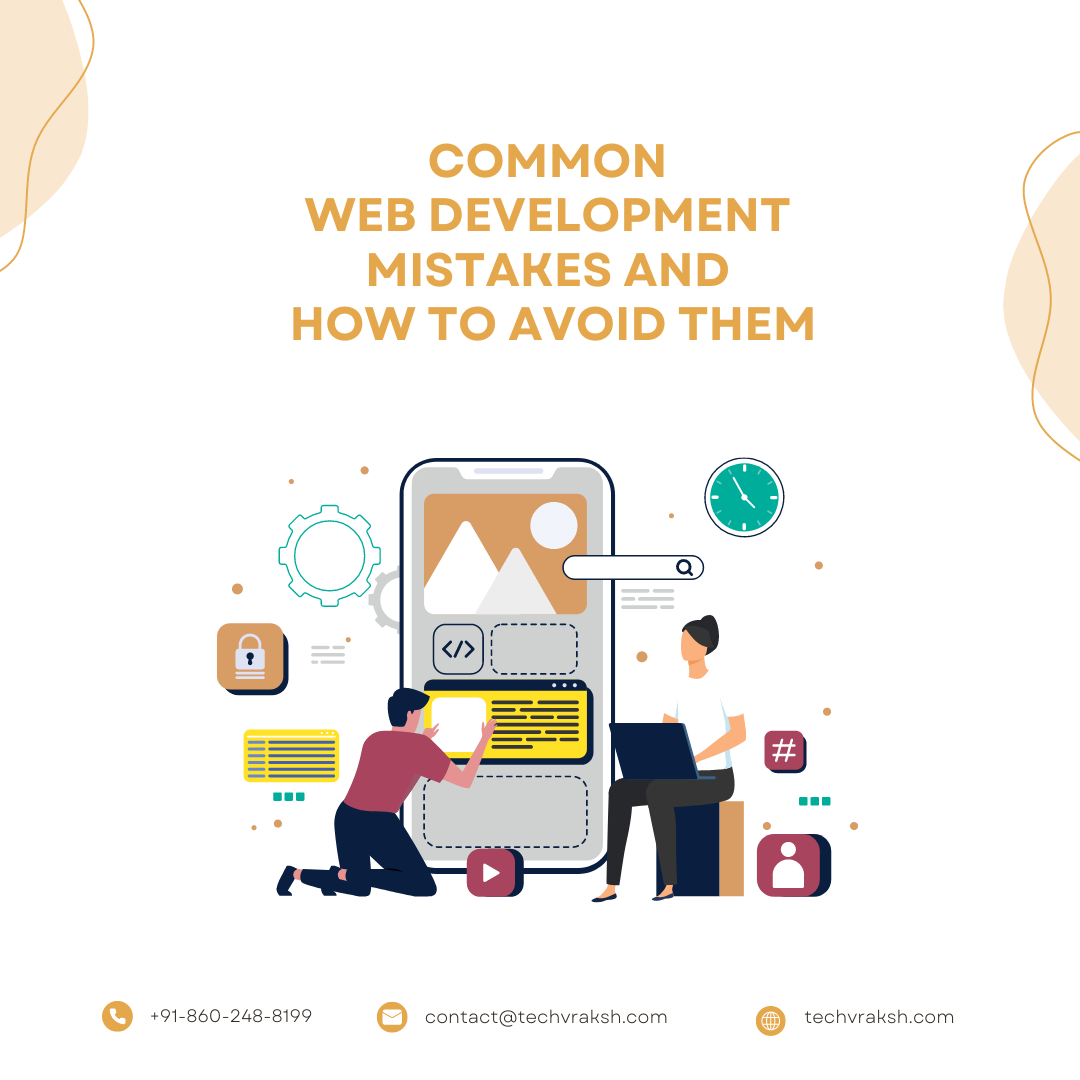Web development is a complex process that involves designing, coding, and optimizing a website for a seamless user experience. However, even experienced developers can make mistakes that can negatively impact the website’s performance, user experience, and search engine ranking. Whether you’re building a new website or maintaining an existing one, being aware of common pitfalls can save you time and frustration.
In this blog, we’ll highlight some of the most common web development mistakes and provide practical tips on how to avoid them.
1. Neglecting Mobile Responsiveness
The Mistake:
One of the biggest mistakes in web development is failing to make a website mobile-friendly. With more than half of internet traffic coming from mobile devices, a website that isn’t optimized for mobile can lose a significant portion of its audience. This can lead to poor user experience and higher bounce rates.
How to Avoid It:
Use a responsive design approach that ensures your website automatically adjusts to different screen sizes. Test your website on various devices and screen resolutions to ensure it performs well across all platforms. Tools like Google’s Mobile-Friendly Test can help you identify areas for improvement.
2. Poor Website Navigation
The Mistake:
A cluttered or confusing navigation structure can frustrate users and cause them to leave your site. Visitors should be able to find the information they’re looking for quickly and easily. Complex menus or hidden links can make navigation a challenge.
How to Avoid It:
Design a clear, intuitive navigation structure. Use standard menus, include a search bar, and make sure important pages are easily accessible from the homepage. Keep your navigation simple and user-friendly to enhance the overall user experience.
3. Ignoring Website Performance Optimization
The Mistake:
Slow-loading websites can drive users away and negatively affect search engine rankings. Performance optimization is crucial, but developers often overlook factors like large image sizes, too many HTTP requests, or poorly optimized code, all of which can slow down a site.
How to Avoid It:
- Optimize Images: Compress images without sacrificing quality.
- Minimize HTTP Requests: Limit the number of files and scripts loaded on each page.
- Use Caching: Implement caching techniques to reduce server load times.
- Optimize Code: Minify CSS, JavaScript, and HTML files to reduce file sizes.
Tools like Google PageSpeed Insights can help identify performance issues and suggest improvements.
4. Lack of Proper SEO Implementation
The Mistake:
Websites that aren’t optimized for search engines may fail to rank well, limiting visibility and traffic. Common SEO mistakes include missing meta tags, poor keyword usage, unoptimized URLs, and lack of alt text for images.
How to Avoid It:
- Use descriptive and keyword-rich meta titles and descriptions.
- Structure your URLs clearly, using keywords where appropriate.
- Include alt text for images to help search engines understand the content.
- Focus on creating high-quality, relevant content and use proper heading tags (H1, H2, H3) to structure it.
SEO tools like Moz and SEMrush can help you optimize your website for search engines.
5. Not Testing Across Browsers
The Mistake:
Not all browsers render websites in the same way, and what works in one browser might not work in another. Failing to test your site across different browsers can lead to inconsistencies in appearance and functionality.
How to Avoid It:
Test your website on multiple browsers, including Chrome, Firefox, Safari, and Edge, as well as older versions of these browsers. Use tools like BrowserStack to automate cross-browser testing and ensure your site looks and functions as expected across different platforms.
6. Security Vulnerabilities
The Mistake:
Security is a critical aspect of web development, yet it’s often overlooked. Failing to secure your website can expose it to various cyber threats, such as hacking, data breaches, and malware.
How to Avoid It:
- Use HTTPS and SSL certificates to encrypt data.
- Regularly update your software, plugins, and libraries to patch security vulnerabilities.
- Implement strong authentication practices, such as two-factor authentication (2FA) and complex passwords.
- Sanitize inputs to prevent SQL injection attacks.
Conduct regular security audits and penetration tests to identify and fix vulnerabilities before they can be exploited.
7. Overlooking Accessibility
The Mistake:
Many developers fail to make their websites accessible to people with disabilities. Ignoring accessibility can not only limit your audience but also lead to legal issues in certain jurisdictions.
How to Avoid It:
Follow Web Content Accessibility Guidelines (WCAG) to ensure your website is usable by everyone. This includes providing text alternatives for non-text content, making sure your site is navigable by keyboard, and using sufficient color contrast. Accessibility tools like WAVE can help you test your site for accessibility compliance.
8. Using Too Many Plugins
The Mistake:
While plugins can add functionality to your website, using too many can slow it down, cause conflicts, and introduce security vulnerabilities. Relying heavily on plugins can also make your site harder to maintain and update.
How to Avoid It:
- Only use essential plugins and regularly update them to ensure compatibility with your site.
- Avoid plugins with low ratings or that haven’t been updated in a long time.
- Where possible, use built-in features or custom code instead of relying on third-party plugins.
9. Failing to Plan for Scalability
The Mistake:
Many developers don’t consider how their website will scale as traffic increases or business needs evolve. A lack of scalability can lead to performance issues or the need for costly overhauls in the future.
How to Avoid It:
Plan for growth from the outset by using scalable hosting solutions, designing flexible architectures, and ensuring your code is modular and maintainable. Consider the future needs of your website and implement scalable databases, cloud storage, and content delivery networks (CDNs).
10. Inconsistent Design and Branding
The Mistake:
Inconsistent design and branding can confuse users and weaken your brand identity. A website that uses different fonts, colors, or styles across pages can look unprofessional and disorganized.
How to Avoid It:
Create a style guide that outlines your brand’s design elements, such as colors, fonts, and logo usage. Ensure consistency in design across all pages, and stick to a unified theme that reflects your brand identity.
Conclusion
Web development is filled with potential pitfalls, but by being aware of these common mistakes, you can avoid them and create a website that is fast, secure, and user-friendly. Whether you’re building a website for yourself or a client, paying attention to these details will ensure a smooth development process and a successful end product.
At TechVraksh, we help businesses build high-quality websites that avoid these common mistakes. Let’s work together to create a flawless, scalable, and optimized website for your business.

